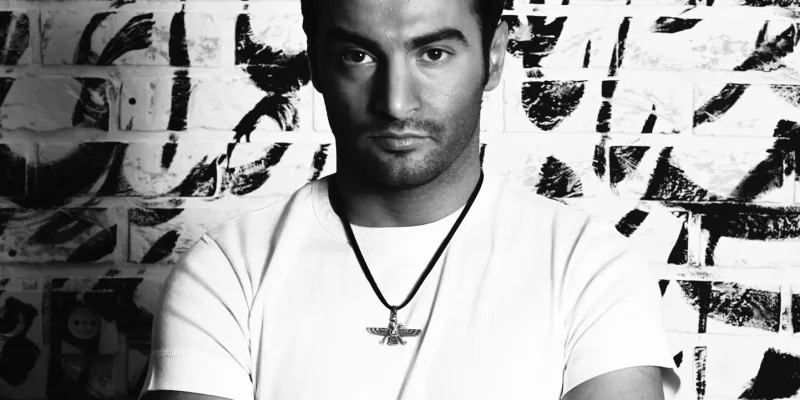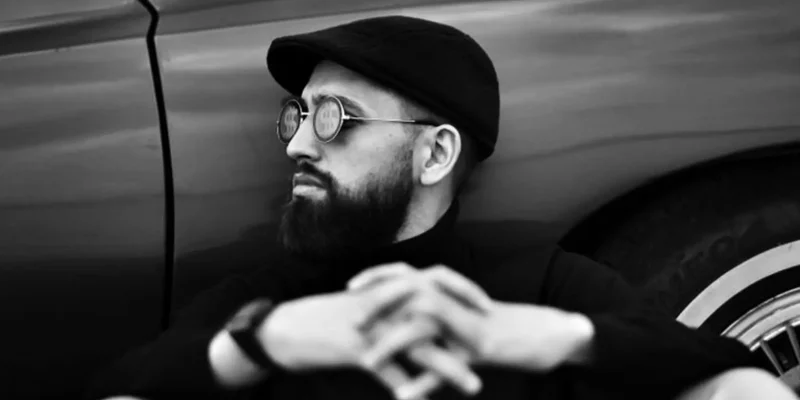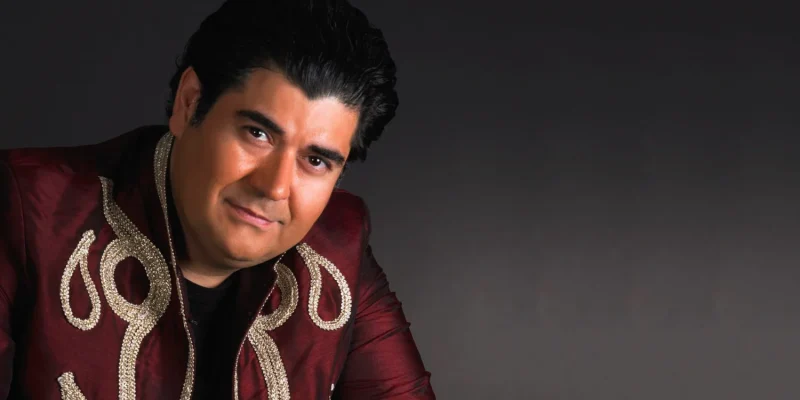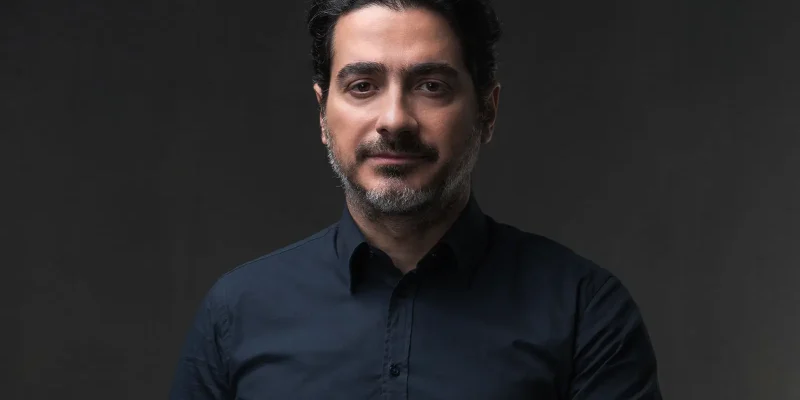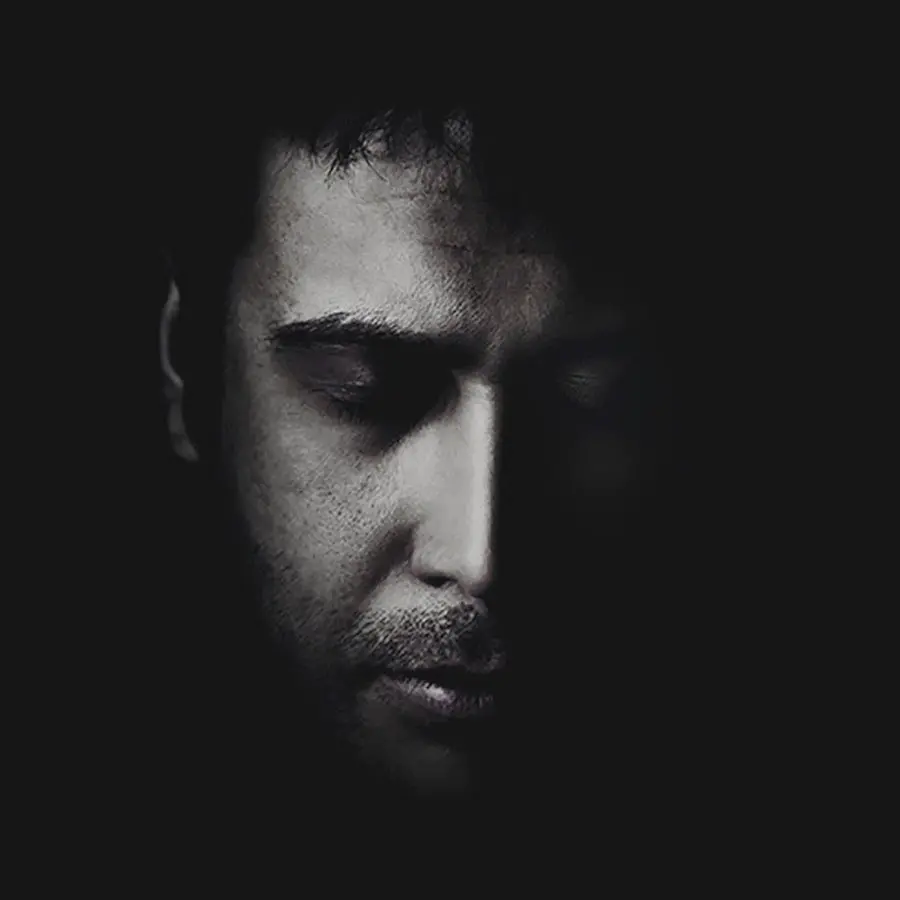
Mohsen Chavoshi Hosseini, a big name in Persian music, has won over listeners with his singing, songwriting, and producing skills from his base in Tehran Iran. Chavoshi born on July 30, 1979, started his music career after finishing school and military duty creating a style that mixes old traditions with new ideas. His talent to combine old Persian instruments with modern sounds has led people to call him the Special Music Man in Iran. This nickname shows how much he’s helped Persian music grow bringing in styles like dubstep and rock, while also making a big mark as a songwriter.
Mohsen Chavoshi’s music has a profound influence on the Iranian music scene. His diverse discography, which includes hit albums and singles that blend Persian music with dubstep, shows his wide range as a songwriter. His work proves his skill and has a deep connection to his roots.
Chavoshi comes from Kurdistan and now lives in Mashhad. His fresh take on music has allowed him to connect with listeners both in Iran and around the world. This has made him a key figure in Persian music and beyond.
Early Life and Career Beginnings Mohsen Chavoshi
Birth and Early Years
Mohsen Chavoshi came from a Kurdish family in Khorramshahr, Khuzestan Province. This began a life that would have an influence on Persian music. His family lived in Kurdistan Province but moved to Mashhad, Razavi Khorasan Province. Chavoshi finished school there. His move from southwest Iran to Mashhad in the northeast helped shape his early life and views. Some sources say he was born in Tehran, but most agree it was Khorramshahr. This mix of backgrounds adds to his unique music style. As a child, Chavoshi heard traditional Persian music. This early exposure set the stage for his future work in music.
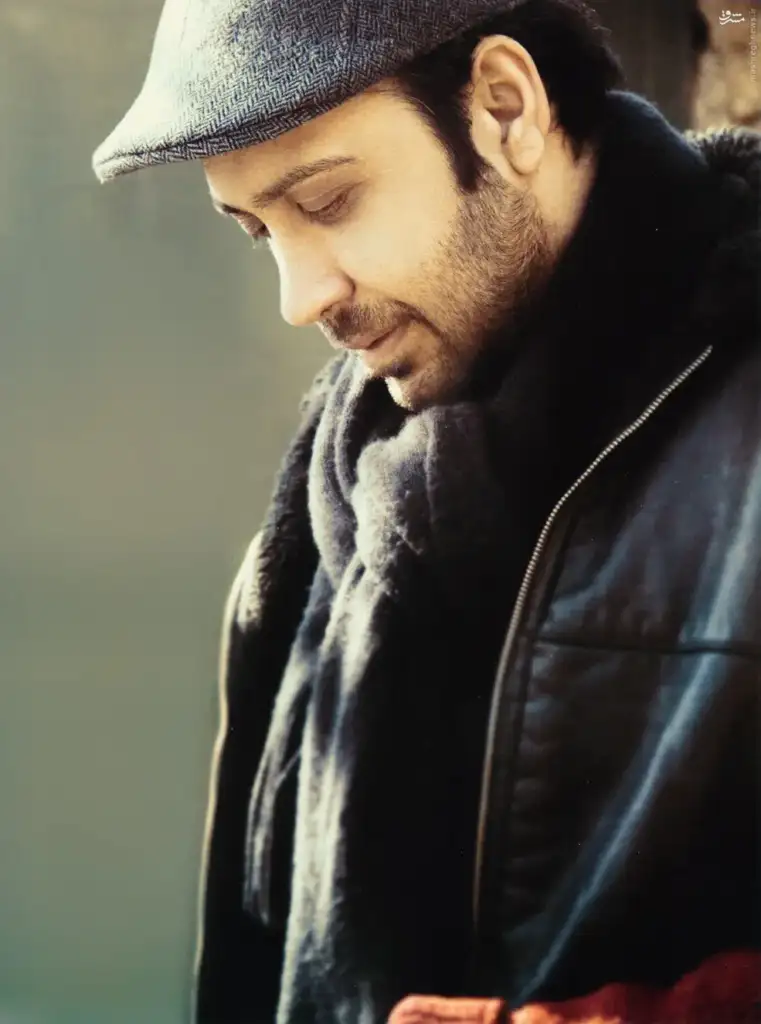
Getting Started in Music
After finishing school and his time in the military, Mohsen Chavoshi started his music career, which led him to become one of the most popular musicians in Persian music. He released his first album, “Kashti,” in 2000 kicking off a busy career that would last over 20 years.
Chavoshi’s music, which mixes Persian instruments with modern styles like rock and dubstep, has won over listeners in Iran and around the world. His skill in blending old and new music styles shows how flexible he is as a musician and has helped Persian music grow and change. Chavoshi has made nine albums, including music for the 2007 movie “Santouri”. His journey from a boy in Khorramshahr to a well-known musician in Tehran shows how much he loves music and how talented he is.
Musical Style and Evolution
Mohsen Chavoshi’s music career stands out for its unique mix of old Persian instruments with new rock sounds. This combo has earned him praise across the music world. His albums, with hits like “Jacket,” “White Flag,” and “I Myself Am The Thirteen,” plus singles such as “Metro,” “Haa,” and “Kashki,” show how he can blend poetic Persian words with modern tunes. This has struck a chord with fans at home and abroad. His knack for weaving traditional Persian instruments into rock music has made him a trailblazer in the field.
Incorporation of Traditional Instruments
Chavoshi’s album “Yek Shakheh Niloofar” shows his intentional try at a new style. This style moves closer to rock music but keeps traditional Persian instruments. This try wasn’t just Chavoshi growing as an artist. It also made a big mark on the music world. It showed how old and new sounds can mix well. The album had help from skilled producers Shahab Akbari and Mohammad Reza Ahari. It became the top sold album in Iran. It sold over one million real copies. This success proves how much people liked this new music style.
Experimentation with Genres
Chavoshi’s music took a new turn with his 2010 album “Jakat” (Jacket). This record had catchy heartfelt tunes and words. It kicked off with a lively “Bandari” style song in a southern Iranian dialect catching many fans off guard with its high energy, a big shift from his earlier work.
This album, along with “Shahrzad” from 2018, shows how Chavoshi can try out different styles . He mixes appealing melodies engaging rhythms, and touching lyrics that often talk about love, sadness, and looking forward. His music has a unique Middle Eastern sound and makes heavy use of old-school instruments like the oud and santoor. It’s not just made Iranian culture more known worldwide, but it’s become a symbol of it too. His beautiful words and deep melodies touch people’s hearts.
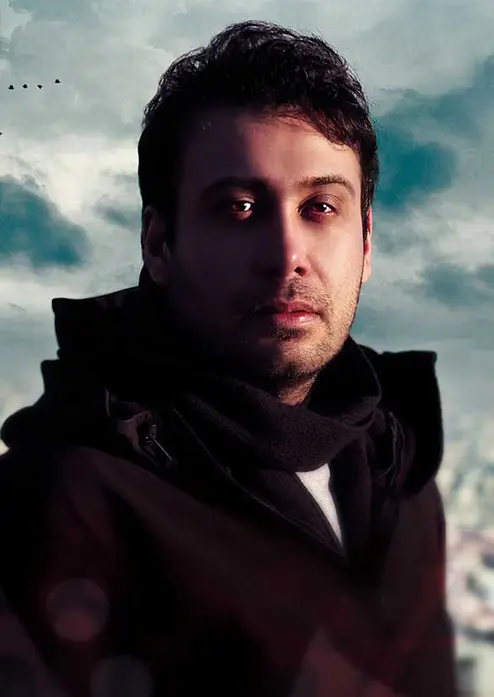
Mohsen Chavoshi Hosseini, a celebrated figure in Persian music, has captivated audiences with his singer, songwriter, and producer talents, based in Tehran, Iran. Born on July 30, 1979, Chavoshi’s journey in music began post his academic and military services, evolving into a career steeped in cultural richness and modernity. His knack for blending traditional Persian instruments with contemporary sounds has earned him the title of the Special Music Man in Iran, underlining his pivotal role in the evolution of Persian music to include genres like dubstep and rock, alongside his seminal works as a songwriter.
As Mohsen Chavoshi continues to influence the Iranian music scene, his diverse discography, including hit albums and singles that integrate Persian music with dubstep, showcases his dynamic range as a songwriter. His work is not just a testament to his prowess but also reflects a deep connection with his roots, being originally from Kurdistan and later based in Mashhad. Chavoshi’s innovative approach to music has allowed him to resonate deeply with both national and international audiences, making him a pivotal figure in Persian music and beyond.
Early Life and Career Beginnings

Birth and Early Years
Mohsen Chavoshi was born into a Kurdish family in Khorramshahr, Khuzestan Province, marking the beginning of a life that would later become influential in Persian music. His family, hailing from Kurdistan Province, eventually migrated to Mashhad, Razavi Khorasan Province, where Chavoshi completed his education. This journey from the southwestern part of Iran to the northeastern city of Mashhad played a significant role in shaping his early experiences and perspectives. Despite some sources citing Tehran as his birthplace, the consensus points to Khorramshahr, highlighting the diverse backgrounds that contribute to his unique musical style. Growing up, Chavoshi was exposed to traditional Persian music at an early age, which laid the foundation for his future endeavors in the music industry.
Entry into Music
Following his school years and military service, Mohsen Chavoshi embarked on his music career, a path that would see him become one of the most celebrated musicians in Persian music. His debut album, “Kashti,” released in 2000, marked the beginning of a prolific career that would span over two decades. Chavoshi’s music, known for blending Persian instrumentation with modern genres such as rock and dubstep, has captivated audiences both within Iran and internationally.
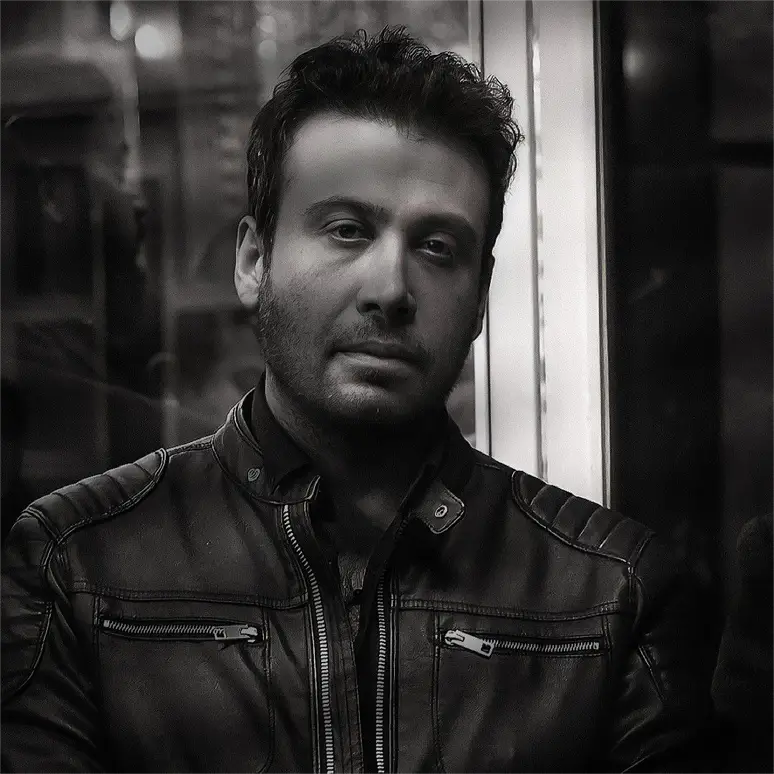
His ability to incorporate traditional elements into contemporary music has not only showcased his versatility as a musician but also contributed significantly to the evolution of Persian music. With nine albums to his name, including a soundtrack for the 2007 film “Santouri”, Chavoshi’s journey from a young boy in Khorramshahr to a renowned music figure in Tehran is a testament to his dedication and talent in the music industry.
Musical Style and Evolution
Mohsen Chavoshi’s musical journey is marked by a distinctive blend of traditional Persian instrumentation with the contemporary sounds of rock, making his style both unique and widely acclaimed within the music industry. His albums, including hits like “Jacket,” “White Flag,” and “I Myself Am The Thirteen,” along with singles such as “Metro,” “Haa,” and “Kashki,” have showcased his ability to merge poetic Persian lyrics with modern musical elements, resonating with audiences both nationally and internationally. This unique flair for integrating traditional Persian instruments into the rock genre has established him as a pioneering figure in the music scene.
Incorporation of Traditional Instruments
Chavoshi’s work, particularly in his album “Yek Shakheh Niloofar,” demonstrates a deliberate experimentation with a new style that leans more towards rock music while still incorporating traditional Persian instruments. This experimentation was not only a personal evolution for Chavoshi but also a significant contribution to the music industry, showcasing the harmonious blend of traditional and contemporary sounds. The album, which saw contributions from professional producers Shahab Akbari and Mohammad Reza Ahari, became the biggest legally sold album in Iran, with over one million non-bootleg copies sold, highlighting the widespread appeal of this innovative musical style.
Experimentation with Genres
Chavoshi’s musical evolution continued with his 2010 album “Jakat” (Jacket), which featured up-tempo, passionate melodies and lyrics. The album opened with an upbeat melody in the style of “Bandari” with a southern Iranian dialect, surprising many of his listeners with its energetic departure from his previous works. This album, along with “Shahrzad” released in 2018, demonstrates Chavoshi’s successful experimentation with various genres, blending catchy melodies, enticing beats, and emotive lyrics that often explore themes of love, sorrow, and hope.
His music, characterized by a distinctive Middle Eastern feel and the prominent use of traditional instruments like the oud and santoor, has not only popularized Iranian culture globally but has also become a symbol of it, moving listeners deeply with its beautiful lyrics and profound melodies.
Notable Albums and Singles
Mohsen Chavoshi’s music collection covers many albums and singles that have had a big influence on Persian music fans and listeners worldwide. He’s known for mixing poetic Persian words with modern sounds, which has made him popular in the music world.
Breakthrough Projects
Chavoshi’s music career has seen the release of several albums that have struck a chord with his audience. Works like “Jacket,” “White Flag,” and “I Myself Am The Thirteen” are key pieces in his portfolio showing off how he mixes old and new music styles. He branched out into movies in 2007 creating the soundtrack for “Santouri.” This move proved he could do more than just make albums, as his music added feeling to the film in a way Chavoshi could pull off.
Latest Releases
In the past few years, Chavoshi keeps breaking new ground and drawing people in with his music. He’s put out singles like “Jahane Laghar” and “Bi Badan,” as well as albums “No Name” and “Amir e Bi Gazand,” which hit the shelves in 2022. These works show how Chavoshi always tries to push into new musical areas while staying close to his Persian music roots. The single “Jahane Laghar,” which came out in 2024, proves that he still appeals to people and can reach listeners around the world.
Chavoshi’s music stands out as groundbreaking in Persian tunes mixing old instruments and ideas with new sounds and recording methods. His albums and singles make the Persian music scene richer and also bring these deep musical roots to listeners worldwide. This cements his spot as a key player in the music world.
Contributions to Cinema
Mohsen Chavoshi’s impressive career in music has brought him recognition in Persian music and allowed him to make key contributions to cinema. His work in film music composition has added a fresh aspect to his celebrated career showing off his range and deep grasp of how soundtracks can stir emotions.
Soundtracks for Films
Chavoshi’s skills go beyond making music. He’s also good at creating soundtracks for movies. In 2007, he wrote the music for “Santouri,” a film by Dariush Mehrjui. His music had a big impact on the movie making it more emotional. This shows he’s good at different things and that filmmakers think of his work. Chavoshi has also made music for other films like “Pig Gene” (2018) and “Honey Loan” (2013). He’s worked on TV shows too such as “Amsterdam” (2023) and “Scorpion in Love” (2023). He can work well with many different artists, from Ghorban Najafi to Elnaz Habibi. This shows how much he influences both music and movies.
How Movies Succeed
Chavoshi’s work has a huge influence on these films’ success. His “Santouri” soundtrack earned praise from critics and won best soundtrack awards at the Kera International Film Festival in 2008 and the Donyaye Tasvir ceremony in 2011. These honors show Chavoshi’s talent to boost films’ storytelling and emotional depth through his music. “Santouri,” a moving story about addiction and loss, got better because of Chavoshi’s music, which fit with the film’s ideas and plot. His music can cross cultural lines making movies more engaging and touching for people all over the world.
Chavoshi’s work in cinema shows his wide-ranging skills and how well his music fits with a film’s visual story. His creations continue to make a lasting impact on Persian music and movies in general.
Awards and Recognitions
Mohsen Chavoshi’s career in music has seen many big wins and honors showing how he has influenced music both in Iran and around the world. He has a special way of mixing old Persian instruments with modern rock and pop. This unique sound has earned him lots of fans and quite a few big awards.
National and International Acclaim
Chavoshi has received many awards for his work in music and movies. His music for the film “Santouri” won best soundtrack awards at the Kera International Film Festival in 2008 and the Donyaye Tasvir ceremony in 2011. Radio Javan named his album “Tavalodet Mobarak,” which includes the popular song “Khab,” as “Album of the Year” at their 2007 music awards. This shows how well he mixes poetic Persian words with modern sounds. Also, the Rumi (Molana) Conference honored Chavoshi in 2016 showing his impact on Persian music and culture.
Contributions to the Persian Music Scene
Chavoshi’s influence goes beyond his musical abilities to his social activism. He has used his platform to rally his large following for charitable causes. , he has saved more than 50 people from execution through fundraising efforts. This activism has boosted his popularity showing his dedication to social issues in Iran. While some conservatives have criticized him, Chavoshi’s work has earned praise from fans and critics alike. He has become an important figure not just in music, but also as a driver of social change.
His long list of awards, along with his work for social causes, shows Mohsen Chavoshi’s key role in Persian music and beyond. He brings new ideas to the genre while staying true to his roots. This has made him a much-loved artist and an example for up-and-coming musicians in Iran and worldwide.
Personal Life
Mohsen Chavoshi, a star in Persian music, draws in listeners with his songs and also shares parts of his personal life building a stronger bond with fans. His story, from his start in Khorramshahr to his life now, gives us a clear view of the person behind the music.
Family and Relationships
Chavoshi came from a Kurdish family in Khorramshahr, Khuzestan Province. His family lived in Kurdistan Province but moved to Mashhad, Razavi Khorasan Province. In Mashhad, he finished school and began his music career. This move from southwest to northeast Iran shaped both his music style and personal life.
In March 2009, Chavoshi got married. This marriage brought him a son named Zankow, which changed his life. Chavoshi’s role as a dad and husband shows a side of him that fans see but like.
How His Music Changed
Chavoshi’s music comes from his life and culture. He grew up in a family that loved music so he heard traditional Persian songs from when he was little. This early start helped him create his own sound mixing old Persian instruments with new electronic beats, which makes his music stand out.
His unique style, which mixes old and new, has won him praise and has an impact on younger musicians in Iran. Chavoshi’s music acts as a link pushing young artists to embrace their roots while venturing into new musical areas.

Also, Chavoshi’s Kurdish background and his childhood in Mashhad have shaped his music . His songs known for catchy tunes heartfelt words, and a distinct Middle Eastern vibe, show his strong tie to his roots. Through his music, Chavoshi keeps inspiring and reaching a wide audience, bridging cultural gaps and bringing people together with his gripping storytelling and musical creativity.
To wrap up, Mohsen Chavoshi’s personal life and relationships have a big impact on his music career giving him a wealth of experiences and cultural background to use. His trip from Khorramshahr to Mashhad and his role as a family man add depth to his music helping it connect with fans worldwide.e.
Conclusion
Looking at Mohsen Chavoshi’s impressive career, we can see that his unique music style has struck a chord with listeners both at home and abroad. He blends traditional Persian instruments with modern genres creating a sound all his own. Chavoshi has made big contributions to Persian music and movies showing he’s a versatile artist who can bridge cultural gaps. His music shows his deep connection to his cultural roots while also demonstrating his creativity in bringing Persian music into the modern age. His journey from Khorramshahr to becoming a big name in Tehran shows how personal and cultural experiences can shape an artist’s work.
Looking back at Chavoshi’s path, his personal experiences, and his career achievements, we can see how he has shaped Persian music. He’s committed to trying out new musical areas while staying connected to traditional sounds, which shows how he links different generations of music fans. Also, his work for social causes proves how artists can make a real difference in society. As Mohsen Chavoshi keeps wowing listeners by blending traditional and modern music, his impact stands as proof that art can honor its roots and still break new ground.
FAQs
Mohsen Chavoshi is a popular Iranian singer, songwriter, and music producer. He is known for his unique voice and emotional songs that often combine elements of Persian poetry with modern music styles.
Mohsen Chavoshi’s music spans several genres, including Persian pop, rock, and traditional Persian music, often blended with modern electronic elements. His ability to mix these styles has made him one of Iran’s most beloved artists.
Some of his most famous songs include:
- “Haa”
- “Masnad”
- “Bekeshid Divoonaro”
- “Shahrzad” (from the popular TV series “Shahrzad”)
His songs often convey deep emotions and are praised for their poetic lyrics.
No, Mohsen Chavoshi has never performed live concerts. Despite his popularity, he has chosen not to perform on stage, which has only added to his mystique and unique connection with fans.
You can find Mohsen Chavoshi’s music on platforms like Spotify, Apple Music, and YouTube, as well as on Iranian music websites. Many of his albums are also available for purchase in physical and digital formats.
